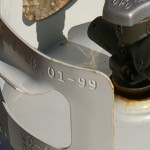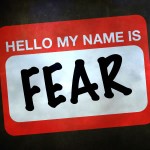By RSOPerator
On March 11th , 2011 a massive earthquake and subsequent tsunami struck northern Japan, devastating parts the country and triggering a nuclear emergency. Many citizens there suddenly found themselves exposed to freezing conditions without adequate shelter, food or drinking water. This tragic event illustrates for all of us the undeniable importance of many things, one of which is the importance of having a 72 hours survival pack on hand for every member of our family.
Assembling a basic 72-hour survival pack (i.e. bug-out bag) can be done quickly and at a reasonable expense. Nearly all of the items one would find useful or necessary can be purchased from sporting goods retailers, big-box stores and large grocery chains, and as we all know, buying from retailers who purchase in bulk saves us money.
Tailoring the make-up of your pack to your personal skills and your environment is always the smart way to go. Packing the absolute basics of clothing, food, and water is a given, but, for example, if you have exceptional map reading and land navigation skills and live in a very remote area, you may do well to pack detailed maps and a quality map compass. On the other hand, if your strengths lie in areas other than land navigation, you may opt to instead purchase a handheld GPS device and pack plenty of batteries.
Considering your environment may mean the difference between life and death. Remember to add cold weather gear in the winter months if freezing weather is an issue where you live. You may wish to pack extra water and lightweight clothing if you reside in an area where extremely hot and dry weather is common. The key is to plan ahead and think realistically about the types of situations you are likely to find yourself in.
My wife and I function as a team, each of us possessing some unique skills, so we divvy-up some special items for our bags accordingly. Of the two of us, I’m the more experienced with firearms and possess a bit more upper body strength, so items unique to my pack include the heavier hand tools and a firearm cleaning kit. My wife has been learning more advanced first aid and emergency medical procedures, so her pack includes our extensive medical kit with field surgical supplies. So, as you can see, the contents of our two packs are not identical, but we still both carry essential items such as appropriate clothing, food, water, and hygiene products. We feel this redundancy is important in case we find ourselves temporarily separated, or we somehow manage to lose one of our packs.
Picking the right bag or backpack for your needs is obviously important. Be sure to purchase a pack that is durable and is big enough to hold all of your gear. Metal zippers and rain resistance are both a plus. Also, you will want to be sure your pack is reasonably comfortable to carry when the weight of all your gear is added in.
My wife and I purchased well built, military style, frameless backpacks that feature metal zippers and woodland digital (MARPAT) camouflage. We prefer camouflage packs so they can easily be hidden from sight if necessary. In terms of camouflage, the MARPAT pattern is the best I’ve found when considering the wooded surroundings here in the Midwest US. Both backpacks are covered with military MOLLE straps to accommodate external MOLLE and Alice gear. This particular feature is ideal if you want to expand your packs by adding external pouches and/or canteens.
My 3 day bag contains:
- • Underwear, socks, BDUs
- • Waterproof poncho
- • 3 days food supply (jerky, dry soup, dry hot cereal, dried fruit, trail mix, food bars, powdered milk)
- • 1 qt canteen & metal canteen cup
- • Water purification tablets
- • Water filtering straw
- • Lighter, fatwood, waterproof matches, candle
- • Shampoo, bar soap, toothpaste, toothbrush, toilet paper, hand sanitizer
- • Folding chow set
- • Glow sticks
- • Camouflage duct tape
- • Para cord
- • Entrenching tool
- • Multi-tool
- • Folding saw
- • Sterno folding stove
- • Sterno fuel 2 pack
- • Firearm cleaning kit
My wife’s 3 day bag contains:
- • Underwear, socks, BDUs
- • Waterproof poncho
- • 3 days food supply (jerky, dry soup, dry hot cereal, dried fruit, trail mix, food bars, powdered milk)
- • 1.5 qt water bottle with carry strap
- • Water purification tablets
- • Water filtering straw
- • Lighter, fatwood, waterproof matches, candle
- • Shampoo, bar soap, toothpaste, toothbrush, toilet paper, hand sanitizer
- • Folding chow set
- • Glow sticks
- • Camouflage duct tape
- • Para cord
- • Flashlight / lantern combo
- • Sterno fuel 2 pack
- • Extensive first aid / medical kit
- • Feminine hygiene products
Our daughter’s smaller 3 day bag contains:
- • Underwear, socks, camouflage clothes
- • 3 days food supply (dried fruit, trail mix, emergency food bars)
- • Small water bottle
- • Additional emergency 4oz water pouches
- • Emergency compass, thermometer & whistle combo
- • Shampoo, bar soap, toothpaste, toothbrush, toilet paper, hand sanitizer
- • Glow sticks
- • Battery powered lantern
- • Small toy stuffed animal
Though our family bug-out bags are always fully packed and ready, they do not contain any firearms or ammunition. This is so the bags can be snatched up in an emergency and thrown into a car without the worry of breaking any local firearms laws. After some discussion, my wife and I have elected to carry special weapons and ammunition separately.
It’s important to remember; your emergency pack can mean the difference between survival and becoming a statistic, and a bag that is not packed or easy to get to is essentially worthless in an emergency.







